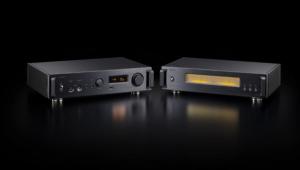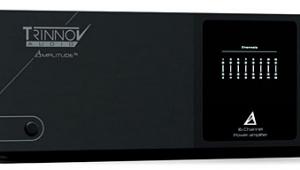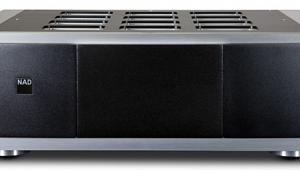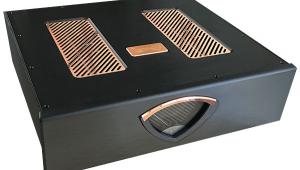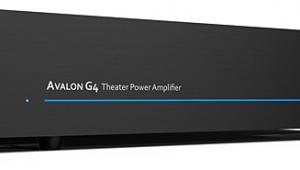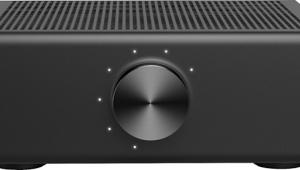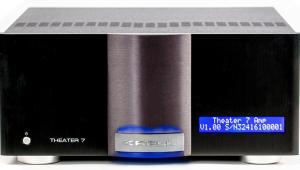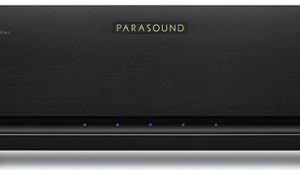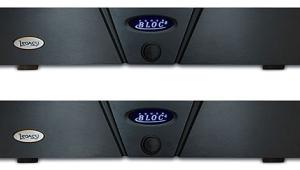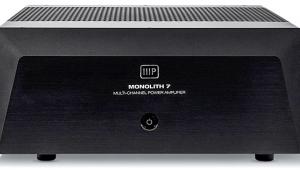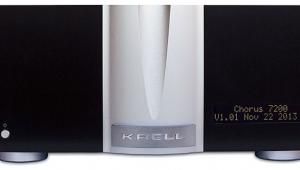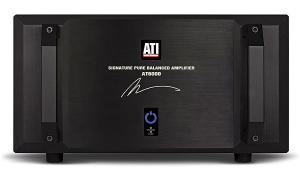Audio Refinement Pre-2DSP & Multi-5 preamplifier-processor & multichannel power amplifier

André takes a slow, methodical approach to audio design, making sure to get it right before a product is released to the public; as a result, YBA products remain available a long time. (The Integré integrated amplifier, which I reviewed in the June 2002 issue of Stereophile, has been in the line since 1991.) No wonder, then, that YBA has not rushed into the highly volatile field of home theater, but has waited to make the move until the dust has more or less settled.
While some audio manufacturers are on their third or fourth generation of home-theater products, the Audio Refinement Pre-2DSP and Multi-5 are YBA's first such products. Although the design and most of the actual components are pure YBA, Audio Refinement products are assembled in Taiwan, which keeps their prices competitive.
Description and Design
Yves-Bernard André's products for YBA have always had a kind of understated elegance: compact, impeccably finished, and adhering to the principle of form follows function. The same approach characterizes the Audio Refinement home-theater products. The Pre-2DSP is one of the smallest preamp-processors I've had for review; the size is kept small not to save money on the enclosure, but to ensure that the construction is as rigid as possible, moving resonances out of the audible range. Similarly, for a 125Wx5 amp, the Multi-5 is exceptionally small but quite heavy, so you know they haven't skimped on the size of the transformer.
According to André, component vibrations can have a major deleterious effect on sound quality, and both the Pre-2DSP and the Multi-5 are designed to minimize these vibrations. Transformers are suspended to reduce the transmission of vibrations to the rest of the circuitry, and each component has three feet rather than four, a tripod arrangement that prevents "rocking" and helps drain vibrations. The chassis materials are brushed and colored aluminum, used because of the metal's nonmagnetic property.
The front panel of the Pre-2DSP features a smallish LCD display (whose characters I could almost make out from my 15-foot viewing distance), a power button, and buttons for volume up/down, selection of input, sound field, equalization settings, equalization on/off, and one labeled Balance, which permits individual volume trim of each channel. The rear panel has the usual assortment of inputs and outputs, including two sets of component-video inputs, three coaxial digital inputs plus one TosLink, and a 5.1-channel analog input. There is a rear-center output jack, but it was inactive in my review sample; an upgrade to 6.1 operation should be available by the time you read this. (There's no word on a 6-channel version of the matching Multi-5 amplifier.)
One of these days, I'll review a pre-pro with a remote whose ergonomics are beyond reproach. The Pre-2DSP is not it. First, the Pre-2DSP's remote lacks illumination, a feature that should be mandatory for any device of this sort (but which, to be fair, is lacking in most of the competitors at the Pre-2DSP's price). The best thing I can say about the Pre-2DSP's remote is that the volume-control buttons are distinctively shaped and easy to find.
What's not so easy to find is the frequently used Mute button, one of a set of small buttons near the top of the remote. (On better-designed remotes, Mute is right next to Volume.) Input selection is done by pressing one of two buttons that cycle the input forward and back, but there is no direct access to inputs. As a result, switching inputs from Digital 1 to Analog 3 requires pressing one of the input-selector buttons several times, or pressing and holding it until the desired input is reached and hoping that your reaction time is fast enough that you can release the button before the input has cycled past the one you want. Not very convenient.
The remote does let you save and recall five presets, so that you could set up, say, Preset 3 to be Analog 3 with Pro Logic engaged—but then you have to remember that Preset 3 represents Analog 3 (not Digital 3), and switching to Analog 3 with this configuration still involves pressing Preset 3 and then Load—and, in the dark, you may end up pressing Save by mistake.
In terms of features for the price, the Pre-2DSP is at best about average. You get the usual Dolby Digital, Dolby Pro Logic, DTS, and five "sound field" effects: Hall, Theater, Stadium, Club, and Church, each with variable reverb. I would trade all these effects for Pro Logic II, which our Pre-2DSP did not have (an upgraded board, which includes PLII, was scheduled to be released shortly after our early April 2003 deadline). The Pre-2DSP does have a 5-band equalizer, which, used judiciously, can tame overly bright soundtracks, much like the THX re-equalization feature. The manual gives no suggestions about how to use the equalizer, other than saying that it "allows you to fine tune the sound." The de rigueur 5.1-channel analog input for SACD and DVD-Audio sources bypasses all processing.
The Pre-2DSP uses the Motorola DSP56362 chipset, which features 24-bit processing and is capable of speeds up to 100 MIPS. The DSP56362 was used in one of my favorite pre-pros, the Thule Space PR250, so I know it has the potential for excellent sound quality, but it was introduced in 1998, so it's not exactly cutting-edge as far as chips go. Motorola has since introduced the DSP36366 (120 MIPS) and DSP36367 (150 MIPS). The Pre-2DSP's promised upgrade will also incorporate the DSP36366.
- Log in or register to post comments
